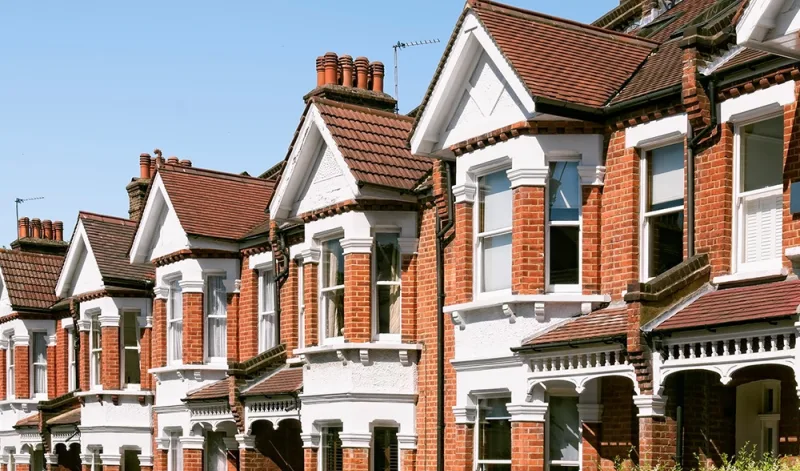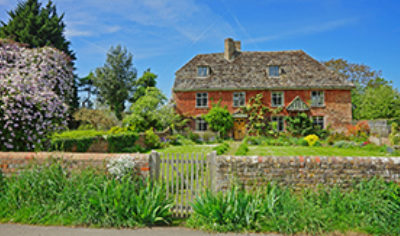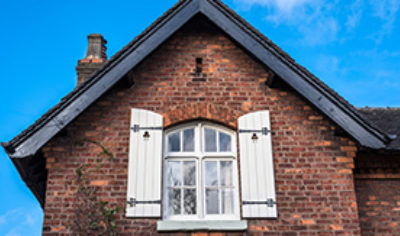At the end of the Second World War it was generally accepted that the standard of housing in many UK towns and cities was not at all adequate, many buildings already in a serious state of dilapidation prior to the outbreak of war, had suffered further damage from aerial bombardment making restoration or repair not possible. Many important buildings were lost at this time and when in 1941 the ministry of works started to appoint regional panels of architects to make lists of important buildings worth saving, some of the countries fine buildings began to receive a degree of protection. By 1944, realizing that the war was coming to an end, plans were already well under way for post war rebuilding in Britain but how would local authorities meet the housing needs of a country brought to it’s knees by both the human & economic cost of a war. Of course, there was some mileage in the preservation of important and architecturally interesting buildings but a large proportion of the housing stock was basically, slum housing, fit only for clearance. For too long, persons had been living in cramped unsuitable conditions and an alternative had to be sought for UK citizens who frankly, deserved better.
There were many problems facing developers and town planners, firstly, these were austere times, money was in short supply and social housing needs had to be addressed in an economic fashion. Faced with a shortage of space and not enough land, developers decided to build upwards and hence the tower block came in to existence.
The skylines of our major towns and cities have changed dramatically since this time. Before 1950, there were hardly any high rise residential blocks of flats in London and their appearance must have seemed a novelty at first. Designed as a quick fix, to provide homes, they were initially very popular, many offered spectacular views and of course, they were brand new, many of the residents were used to living in crumbling accommodation with poor sanitation. These new blocks of flats were a welcome change to these conditions, with some property not having any upgrade work in over half a century.
Whatever was to follow in the coming years and however much derided, the tower block became, there is no doubt that this new style of housing offered hope and a much needed lift to parts of the population that had had to bear the brunt of enemy action, often on a nightly basis. Hailed as the answer to post war housing problems, they were seen as the ideal accommodation to help Britons after the difficult war years. Accounts vary as to the number of tower blocks constructed in total since this time but it is estimated that as many as 40% of the total number constructed were in London.
Tower Block Flat Construction
Construction of blocks took off in the fifties and the boom years for tower blocks of flats lasted approximately 20 years. However, by this time, their appeal was on the wane as people that had to live in them had developed a whole raft of complaints, which were mostly attributed to the design and build of the blocks themselves. These included
- A sense of isolation leading to depression.
- Concerns over the safety of children.
- Poor play areas or no play facilities.
- Concerns over the risk of fires.
- Concerns of poor maintenance and general building condition.
- Problems with dampness & Condensation
- Problems with noise from other flats
- Poor home security
- Infestations from rodents and other vermin
- Abusive neighbours
- Poor layout enabling crime to flourish.
Most of these concerns can be attributed to poor design and build quality and a lack of thought in the planning stage. To be fair to planners at the time, many of these problems could not have been foreseen, blocks of flats dwelling was a relatively new concept and often changes in building design often only come about as a result of experience. To a certain extent as well, authority’s hands were tied but constraints of budgets and often problems were encountered by cheaply constructed buildings, reaching the end of their natural life.
By the 1970s, tower block construction had all but halted, local authorities began to look for other alternatives to meeting housing needs and a number of blocks were pulled down. During the 1980s, there was a resurgent interest in the building of blocks of flats and with the huge regeneration seen in the east end of London, many new properties were constructed and living in a block of flats by the water side ( any water, river or canal) was seen as the height of fashion. Attempts were made to deal with problems encountered in the past, modern construction methods were employed and the quality of materials used was much improved. It is generally accepted that high rise blocks are constructed with more than 6 stories and the new tendency, was to construct more low rise blocks of better quality with more attention paid to the local environment and to the actual internal fitting out of the flats
Security has also been very much improved, most new flats come equipped with deadlocks to secure the doors and where appropriate, key operated window locks. Many blocks have additional security features such as lighting and video entry phone systems. Whilst local authorities and housing associations have not been so prolific in their constructions of these types of buildings, private developers have been over zealous in the construction of flats in almost all parts of the country. Often, large houses are demolished with a new luxury block erected in it’s place. Odd now to think that the humble tower block, once constructed to help ease housing problems is now available in various formats in such prodigious numbers that many new blocks of flats are lying empty with people unable to either afford the rents or the costs of purchase.




























